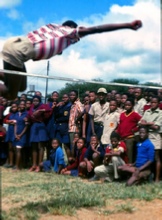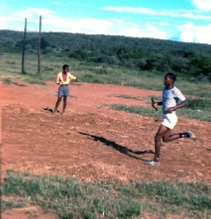© 2018 Dr. M. Sheppard
Education
Economic Development in all sectors has been the aim of the Botswana Government since independence. At independence there were 251 primary schools,with 71,546 pupils, and 9 secondary schools, with 1,565 pupils. Also there was a small trade school with 60 pupils. There was a chronic teacher shortage and 50% of the primary teachers were untrained. In fact only 25% of the population received any education at all. Only 20% of the primary leavers could find secondary places so there was a great shortage of all trained personnel. By 1978 there were 130,000 primary pupils and 17 secondary schools (either grant-
Males Females
At birth 52.5 years 58.6 years
At age 40 71.2 years 73.7 years
At age 60 75.6 years 78.2 years
Today most children receive at least some years of primary education, but secondary education is still limited to the few lucky ones. There are still many people who are illiterate, particularly older people. Education is not necessarily connected with wealth. Some traditionalists still oppose it although primary education is now free. Probably the main hindrance was that, until recently, schools were mostly located in the villages, and children's services were often required at the Lands and Cattle-
There is also an unfortunate but by no means unique attitude particularly amongst secondary leavers. They do not, even if they are unable to find employment, want to go to the Lands or Cattle-
Production of traditional crafts is probably dying out because the skills required obviously need a long period of time to be spent with the traditional teachers, and increasingly -



Secondary students from Seepapitso Secondary School on outing to Gaborone, late 1970s
Gaborone Dam
Holiday Inn, Gaborone
National Museum, Gaborone




Sports Day in 1979. Despite the lack of modern sports facilities Seepapitso Secondary School produced a Middle Distance Olympiad runner for the 1980 Olympic Games in Moscow
Seepapitso Secondary School, Kanye built after independence. As other secondary schools it serves students from the local area as day students and those from further afield are boarders.Only those Primary School Children who did very well in the Standard VII exam are allocated a place at Secondary School.


